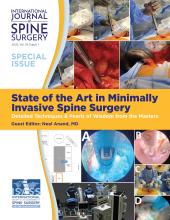ABSTRACT
Background Recently published data suggest that showing patients operated on for adolescent idiopathic scoliosis or kyphosis their preoperative and postoperative photographs may enhance their satisfaction and self-image as measured by Scoliosis Research Society Health-Related Quality of Life Questionnaire (SRS-22) scores. No data exist for adult spinal deformity (ASD) surgery. The aim of this study is to determine the effect on patient postoperative satisfaction and self-image of showing adult deformity patients their preoperative and postoperative whole body photographs.
Methods This was a nonconcurrent prospective study. Patients operated on for ASD with a minimum 2-year postoperative follow-up who had preoperative full-body photographs taken by a professional photographer were included. Two follow-up visits were arranged 7 days apart. In the first visit, patients completed the SRS-22 questionnaire, and full-body standing photographs were taken. In the second visit, patients were asked to complete again questions 4, 6, 10, 14, 19 (self-image), 21, and 22 (satisfaction) of the SRS-22 after seeing their preoperative and postoperative full-body photographs.
Results Thirty patients (28 female) were included. Themedian age at surgery was 50 years (26–76). The median follow-up was 51 months (24–120). SRS-22 results at first visit were: activity 2.79 ± 0.75; self-image 2.71 ± 0.82; pain 2.53 ± 1.10; mental health 3.08 ± 0.77; satisfaction 3.46 ± 1.20; global 2.74 ± 0.72. SRS22 results at second visit were: self-image 2.9 ± 0.75; satisfaction 4.02 ± 0.97. After seeing the preoperative and final follow-up photographs, patients experienced an improvement in SRS-22 self-image (P = .000) and satisfaction domains (P = .011).
Conclusions In patients operated on for ASD, showing preoperative and postoperative photographs improves patient satisfaction with surgery and self-image.
Level of Evidence 3.
Clinical Relevance Our results could be a starting point for introducing full-body clinical photographs as a routine clinical tool in adult deformity patients undergoing surgery.
Footnotes
Disclosures and COI: The authors state no conflict interest in relation to this study.
- This manuscript is generously published free of charge by ISASS, the International Society for the Advancement of Spine Surgery. Copyright © 2021 ISASS







